Yoga
What is Yoga?
Yoga is an ancient and complicated practice, rooted in Indian philosophy. It started as a spiritual movement but has evolved recognized as a path for encouraging physical and mental health.
The six branches are:
- Hatha yoga: This is the physical and mental annex that aims to prime the body and mind.
- Raja yoga: This branch involves meditation and rigid dedication to a sequence of correctional steps known as the eight branches of yoga.
- Karma yoga: This is a way of service to create a future free from negativity and covetousness.
- Bhakti yoga: This terminus is to supply the path of passion, a positive path to channel feelings and pursue approval and tolerance.
- Tantra yoga: This is the route of ceremony, ritual, or consummation of a relationship.
- Jnana yoga: This is regarding perspicuity and intellect as necessary and they desire to unify the two to surpass the regulation.
Chakras
The word chakra means spinning wheel.
Yoga claims that chakras are the center points of energy, ideas, feelings, and the physical body. According to yogic trainers, chakras demarcate how individuals experience truth through passionate responses, wishes or dislikings, stories of trust or fear, and even physical symptoms and effects.
When power evolves closed in a chakra, it triggers physical, mental, or passionate inequalities that display in expressions such as anxiety, lethargy, or inferior digestion.
When power becomes blocked in a chakra, starts physical, cognitive, or emotional imbalances that manifest symptoms such as anxiety, lethargy, or lacking digestion.
Asanas are the multiple physical postures in Hatha yoga. Individuals who rehearse yoga use asanas to free energy and evoke an imbalanced chakra.
There are seven major chakras, each with its focus:
Sahasrara: The crown chakra, which is at the crown of the head, signifies spiritual connection.
Ajna: Located among the eyebrows, the third eye chakra has to do with intuition.
Vishuddha: The throat chakra approximates exemption and verbal communication.
Anahata: The heart chakra, which is in the center of the chest, influences proficient and personal affinities. Any imbalances in this chakra will influence oxygen, hormones, tissue, and organ control.
Manipura: The solar plexus chakra is in the abdomen area. It corresponds to self-confidence, perspicuity, and self-discipline.
Svadhishthana: The sacral chakra, which is beneath the belly button, connects pleasure, well-being, and spirit.
Muladhara: The root chakra, which is at the base of the spine, attaches the mind and body to the bottom to keep an individual dropped. It prevents the sciatic nerves and the parasympathetic worried procedure.
Types
Ongoing yoga attention on exercise, strength, agility, and breathing. It can enable Entrusted Advent to stimulate physical and cognitive well-being.
There are multiple kinds of yoga. An individual should select a sort established on their plans and wellness level.
Types of Yoga
- Ashtanga yoga
- Bikram yoga
- Hatha yoga
- Iyengar yoga
- Kripalu yoga
- Kundalini yoga
- Power Yoga
- Sivananda
- Viniyoga
- Yin yoga
- Prenatal yoga
- Restorative yoga
Other types
Moksha yoga or Modo yoga
CorePower yoga
Forrest yoga
Hot yoga barre
Hot Power yoga
Hot Fusion Yoga
List of Yoga-aasana
- Adho Mukha Shvanasana
- Adho Mukha Vrikshasana
- Akarna Dhanurasana
- Anantasana
- Anjaneyasana
- Ardha Chandrasana
- Astavakrasana
- Bhadrasana
- Bakasana
- Kakasana
- Bakasana
- Bhairavasana
- Ankusasana
- Bharadvajasana
- Bhekasana
- Bhujangasana
- Bidalasana
- Dandasana
- Dhanurasana
- Durvasasana
- Garbha Pindasana
- Garbhasana
- Garudasana
- Gomukhasana
- Gorakshasana
- Halasana
- Hanumanasana
- Janusirsasana
- Kapotasana
- Karnapidasana
- Kaundinyasan
- Kraunchasana
- Kukkutasana
- Kurmasana
- Lolasana
- Makarasana
- Mandukasana
- Marichyasana
- Matsyendrasana
- Mayurasana
- Muktasana
- Samanasana
- Natarajasana
- Navasana
- Naukasana
- Padmasana
- Parighasana
- Parshvakonasana
- Parshvottanasana
- Parshvottanasana
- Pashasana
- Paschimottanasana
- Pincha Mayurasana
- Ardha vrishkasana
- Rajakapotasana
- Shalabhasana
- Sarvangasana
- Samakonasana
- Shavasana
- Kamapithasana
- Sidhasana
- Simhasana
- Shirshasana
- Kapalasana
- Yoga Headstand
- Shirshasana
- Sukhasana
- Supta Padangusthasana
- Ardha maerudhandaasana
- Surya Namaskar
- 1Pranamasana
- Svastikasana
- Tadasana
- Tittibhasana
- Trikonasana
- Trivikramasana
- Supta Trivikramasana
- Tulasana
- Upavishta Konasana
- Urdhva Dhanurasana
- Chakrasana
- Chakrasana
- Urdhva Mukha Shvanasana
- Ushtrasana
- Utkatasana
- Uttanasana
- Utthita Hastapadangusthasana
- Vajrasana
- Vasishtasana
- Viparita Dandasana
- Uttanapadasana
- Viparita Virabhadrasana
- Virabhadrasana
- Tuladandasana
- Virasana
- Dhyana Virasana
- Vrikshasana
- Vrischikasana
- Yoganidrasan
Benefits of Yoga
1. Yoga enhances flexibility
The most cited reason individuals appointed for doing yoga was to augment flexibility.
Yoga seems to be extremely helpful for enhancing flexibility in adults ages 65 and older. More nominal flexibility is a natural function of aging. found that yoga both diverted down loss and enhanced flexibility in more aged adults.
2. Yoga helps with stress relief
But limited physical activity is just one element of yoga. Breath influences, meditation, and auditory methods, like vocalizing and sound baths, have all even been indicated to significantly lessen stress.
Hence, it creates a sense that the double most mentioned cause individuals selected as to why they do yoga was to decrease stress. Thankfully, the science supports that yoga, and particularly asana, is fantastic at lessening stress.
3. Yoga improves mental health
major depressive disorder is thought to be one of the most common cognitive health illnesses in the world.
meta-analysis of 23 interventions reflecting on the impacts of yoga-based therapies on depressive manifestation overwhelmingly concluded that yoga can now be regarded as an effectual alternative treatment for MDD.
movement-based yoga therapies and breathing-based techniques have been shown to significantly improve depressive symptoms.
4. Yoga may reduce inflammation
Usually, the predecessor to illness is chronic hives. Heart disease, diabetes, Crohn’s disease, and numerous other illnesses are linked to extended hives.
Yoga — of different styles, passions, and durations — relieved the biochemical characteristics of hives across several chronic conditions.
5. Yoga will likely augment your strength
While most individuals associate yoga with lengthening and flexibility, some types of yoga types can be considered strength-building.
Yoga’s significance in building power has been studied in several specific contexts — for illustration, as it pertains to people with breast cancer, older adults, and children.
Another study conducted on air pressure personnel discovered yoga to be an adequate strength-building practice across numerous age groups of healthy participants
6. Yoga may reduce anxiety
There are several different stress conditions, such as generalized anxiety disorder, sociable stress, and straightforward aversions.
Numerous analyses indicate that yoga asana may exist influence as an alternative therapy for anxiety disorders, though several of the experimenters request additional replicated analyses before conclusively stating as much.
Yoga Nidra, which is a body-guided meditation, has been established to conclusively reduce symptoms of anxiety.
7. Yoga may improve quality of life
For decades, researchers have viewed QOL as an important predictor of people’s longevity and patients’ probability of gain when treated for a chronic illness or damage.
Meta-analysis has the profitable possibility for yoga to improve QOL in individuals with chronic pain.
Yoga may boost immunity
8. Chronic stress negatively affects your immune system.
When your immunity is compromised, you’re more exposed to illness. Regardless, as examined earlier, yoga is considered a scientifically approved alternative therapy for anxiety.
The research is still developing, but some studies have found a distinct link between practicing yoga (especially unfailingly over the long term) and better resistant technique functioning.
This is due in part to yoga’s power to fight hives and in part to the enhancement of cell-mediated immunity.
9. Yoga can improve balance
Stability is not just necessary when you’re trying to stand on one leg in Tree Pose in a yoga lesson. It’s also necessary for easy everyday activities such as choosing something off the floor, bearing up to a shelf, and dropping stairs.
Yoga has been shown to enhance balance and prevalent performance in athletes.
Likewise, a review of the investigation performed on healthy populations suggests balance may enhance for most individuals behind consistently practicing yoga.
However, falling can have serious effects on certain populations. According to the Agency for Healthcare Research and Quality, declines are incredibly common among older adults in nursing facilities, and even the simplest ones can guide to an augmented danger of death.
More recent analysis suggests yoga can enhance balance in older populations.
However, more investigations with large model sizes are needed before a general conclusion can be drawn.
Yoga asana can also help enhance balance in people with brain injuries.
10. Yoga may improve cardiovascular functioning
Pranayama, often referred to as “yogic breathing,” is a necessary and valuable aspect of yoga.
The Journal of Ayurveda and Integrative Medicine broadcasted an analysis of 1,400 studies examining the general impacts of pranayama. One key takeaway was that yogic breathing can enhance the functioning of several methods in the body.
Particularly, the examination summarized in the examination found that the cardiovascular method benefited mightily from handling the pace of breathing, as evidenced by favorable changes in heart rate, stroke capability, arterial anxiety, and contractility of the heart.
This investigation indicates that yogic breathing may even impact the brain’s cardiorespiratory compromise to enhance functioning.
11. Yoga may help improve sleep
When calculating rest, investigators look at an individual’s capacity to both fall asleep and stay asleep. Insomnia can influence one or both of these factors.
Yoga has been shown to enhance both how fast people fall napping and how deeply they stay asleep. This is partway due to the aftereffects of exercise and the mental comfort and stress consolation equipped by yoga especially.
In addition to enhancing stress, multiple studies show yoga nidra to be extremely useful at enhancing sleep.
12. Yoga may improve self-esteem
Body illustration and self-esteem are often extremely challenging for adolescents and young grown-ups. The adequate report is that several recent investigations show positive impacts when using yoga for improving self-esteem and perceived body image in these inhabitants.
There has also been promising proof that yoga could assist with the simultaneous signs of dependence, anxiety, and depression in patients with anorexia nervosa.
13. Yoga can encourage more satisfactory posture and body awareness
As a modern association reliant on technology, we appear to be expending more and better time modeling or crouched over instruments.
Yoga improved brain functioning in the compromises responsible for interoception (identifying the senses within your body) and posture.
yoga’s emphasis on mobility and flexibility can contribute to better alignment by removing muscles that are often tight, such as the hamstrings, and enhancing the mobility of the spine.
Accomplishing yoga postures during intervals in your exercises can also encourage better posture.
14. Yoga can enhance brain functioning
Yoga is a mind-body movement, assessments demonstrate.
The investigation noted overhead found that rehearsing yoga activated areas of the brain responsible for motivation, executive functioning, concentration, and neuroplasticity.
15. Yoga can help with burnout
It appears like burnout — excessive fatigue that affects one’s health — is at an all-time exhilaration.
A current investigation examining burnout among hospice employees during the COVID-19 pandemic completed that yoga-based meditation interventions helped greatly facilitate the impacts of burnout by enhancing interoceptive attention.
This is the ability to detect internal calls and respond properly — meaning yoga may help people become more in tune with, and more likely to attend to, their body’s signs.
Other benefits of yoga
- Quitting smoking
- Menopause
- Chronic obstructive pulmonary disease (COPD)
Yoga for Physical Health
1. Strengthens the muscles:
The yoga asanas assist in constructing gut and muscle strength. Regular practice augments endurance, upper body, and muscle strength.
2. More reasonable functioning of the heart and lungs:
The practice of Yoga enhances heart health, and oxygenation in the body and reduces the danger of developing cardiovascular conditions. When one regularly practices yoga asanas and pranayamas, it reduces heart rate, blood pressure, cholesterol tiers, and BMI.
Via pranayama, breathing becomes collected and sweetens lung functioning by increasing its total capability.
Must Know: How to Augment Lung Capacity: 5 Techniques to Augment Lung Capacity
3. Boosts Blood Circulation:
Yoga asanas and pranayama enhances oxygen reserve and nutrients in the body and enhances blood circulation to the body. The enhanced blood flow enhances the fitness of the organs and glows skin.
4. Improved Posture
The practice of Yoga asanas makes one more conscious of their body and self. With this, one initiates to be additional conscious about their posture the way one sits, stands, and walks. Yoga asanas help in balancing and controlling. It constructs one glimpse secure and nourishing.
5. Increased Immunity
Yoga helps in assembling exemption and intensifies every cell in the body. With Yoga, the strength of the body increases becomes nutritious, and keeps illnesses at bay.
Yoga for Mental Health
1) Reduces Stress
stress is one of the main reasons for numerous physical and mental health troubles. With yoga practice, there is a decrease in the stress hormone called cortisol and an increase in the happy hormone called serotonin. Yoga provokes relaxation and peace in the stressed-out nerves.
Yoga asanas, pranayama, and meditation support shifting the concentration from negative ideas to the present moment. It reduces depressive symptoms and anxiety.
2) Improved Sleep Quality
Yoga assists in the release of melatonin a hormone that aids in decreasing sleep and obtaining good-quality rest. Via the practice of yoga asanas and pranayama, the reason calms down and reaches a state of stability that ultimately fabricate the mind and body to sleep.
3) Enhances Self-Acceptance and Self-Love
The statement of other individuals has a huge impact on our perception of ourselves.
Yoga trains us to love, admit and appreciate ourselves. With Yoga asanas training, one retains to devise about their self strengths and frailties. It makes one more confident about themselves and increases self-esteem.
4) Boosts Energy Levels & Reduces Lethargy
After the activity of yoga asanas, one doesn’t feel tired or experience tiredness. One is charged and feels energetic. Yoga creates one additional activity and decreases laziness.
5) Anger Management and Increased Calmness
One of the most important benefits of Yoga is it helps manage anger and makes one more calm and relaxed. Yoga broadens the perspective, extends the blockages, and creates better empathy and understanding of others’ feelings.
This supports augments awareness which decreases anger and makes one adopt a calm and composed approach toward a certain condition.
Yoga is an experiential science and one has to rehearse regularly to gain optimum benefits. Once you begin rehearsing, you will witness the change on all levels and experience the prevalent consequence.
Risks and side effects
It is rareTrusted Source to incur serious harm when doing yoga. The most ordinary harms among people rehearsing yoga are sprains and melodies.
However, individuals may desire to view a few danger factorsTrusted Authority before forming a yoga practice.
However, individuals may wish to view a few risk factors before beginning a yoga routine.
Some individuals may need to change or sidestep some yoga poses that could be difficult given their exact situation.
Beginners should avoid progressive postures and difficult procedures, such as Headstand, Lotus Pose, and harmful breathing.
When ordering a condition, individuals should not replace established medical care with yoga or delay seeing healthcare proficient about an ache or any other medical tribulation.
Who should practice yoga?
Healthcare specialists say that yoga is a safe form of exercise, and damages are unusual.
The likelihood of a person injuring themselves during yoga is rare if they are practicing with a qualified educator. An exemplary educator will observe an individual’s shape and help them make suitable adjustments.
According to the National Center for Complementary and Integrative Health, people may enjoy articulating with a physician before endeavoring yoga, primarily if they:
- have pre-existing knee, hip, and spine damages
- include high blood strain
- have compensation issues
- are 65 years or older
- are pregnant
Face yoga exercises
An easy curtain-raiser to yoga is via simple facade yoga exercises.
Forward Fold and Lions pose (Breath carriage) are poses that augment blood flow to the facade. This can make a person discern more additional open-eyed. There is some evidenceTrusted Advent presenting yoga may delay and decrease skin aging, but more analysis is crucial to learn if and how this transpires.
Forward Fold pose
Stand up directly.
Inhale and keep the branches close to the body.
Exhale and start to bend forward.
Keep the chin leaned to the chest and look at the floor while twisting.
Slip additional down so that the torso sinks towards the foundation and the top of the head is facing the toes.
Hold this class for several puffs.
To get out of the pose, exhale and begin to lift the rear and neck into a standing class.
Lion pose (or Breath pose)
Kneel on the ground, holding knees a diminutive distance asunder.
Cross the ankles and sit rear on the highest heel.
Place palms over the knees.
Take a deep puff in.
Choose a focal point.
Open the mouth and stretch the lingo to the chin.
Exhale with a ha sound.
Make sure the breath is coming from deep within the abdomen.
Hold this place for several breaths.
Change the corner of the ankles to replicate on the further side.
Legs-up exercises
Yoga poses that stretch the legs challenge an individual’s balance and help improve core strength. Some pose suitable for beginners are the Legs-Up-The-Wall pose and Boat pose.
Legs-Up-The-Wall pose
From a seated position facing the wall, gradually roll onto the back.
Extend the arms by the sides, spreading your fingers wide.
Stretch the legs toward the sky so that the heels look like the wall.
Close your eyes and stay in the pose for several minutes.
Boat pose
Sit on the mat, holding a yoga ball in front of your body.
Bring the knees toward the chest.
Inhale and tense the abdominal muscles.
Roll around onto the sacrum and begin to raise the arms while maintaining the ball.
Slowly lengthen and prolong the legs to a 45-degree angle with the floor.
Hold this pose for 510 breaths.
Inhale and roll along, obtain the arms back down, and position the feet on the mat.
Yoga breathing exercises
Alternate nostril breathing
Sit down in a comfy circumstance.
Position the left hand on the lap.
Fold the right index and middle fingers in, and raise the right hand to the snout.
Approach your eyes and use the right thumb to close the right nostril.
Inhale via the left nostril.
Huddle the third finger down on the left nostril.
Lift the thumb of the exemplary nostril.
Exhale through the right nostril.
Inhale via the right nostril.
Complete the correct nostril with the thumb.
Raise the third finger off the left nostril.
Exhale through the left nostril this is the end of one revolution.
Duplicate up to 10 times.
FAQ
What is yoga good for?
According to the National Institutes of Health, scientific evidence demonstrates that yoga sustains anxiety control, cognitive healthiness, mindfulness, nutritional eating, weight loss, and rate break.
What are yoga and its kind?
Yoga operates on the level of one’s body, senses, sentiment, and significance. This has given rise to four broad varieties of Yoga: karma yoga, where we use the body; bhakti yoga, where we use the feelings; gyana yoga, where we use the mind and psyche; and kriya yoga, where we use the power.
Which yoga is most appropriate for the brain?
Padmasana (Lotus Pose) Padmasana in Sanskrit denotes Lotus Flower, so the asana is recognized as Lotus Pose. …
Ardha Matsyendrasana (Seated Twist Pose) …
Vajrasana (Diamond Pose) …
Halasana (Plough Pose) …
Paschimottanasana (Seated Forward Bend)
Is yoga proper for remembering?
When you do yoga, your brain cells expand new associations, and differences occur in brain layout as well as function, resulting in improved intellect craftworks, such as education and commemorative. Yoga props parts of the brain that play a key role in remembering, concentration, attention, consideration, and speech.
Can yoga stop overthinking?
Some yoga mudras that can help you handle overthinking
Rather, simply concentrate on modeling still and obtaining your views without any personal involvement or determination. Observing them go by as a third individual simply being a spectator without any belief of what is right or incorrect, instructs Grand Master Akshar.


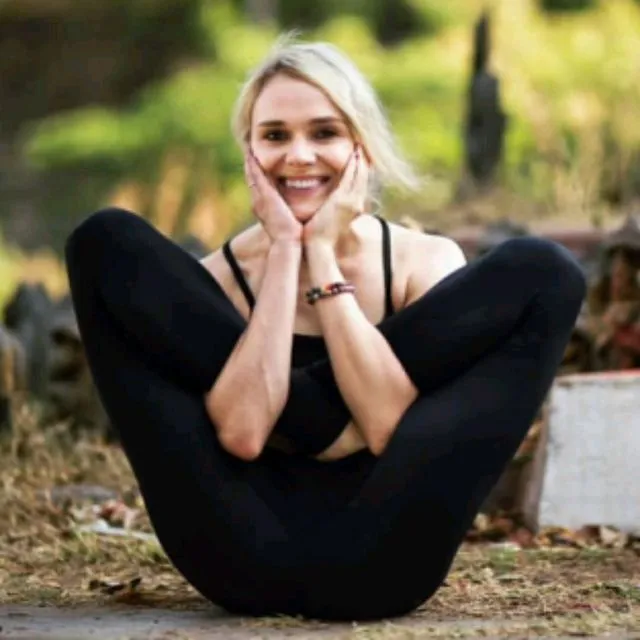
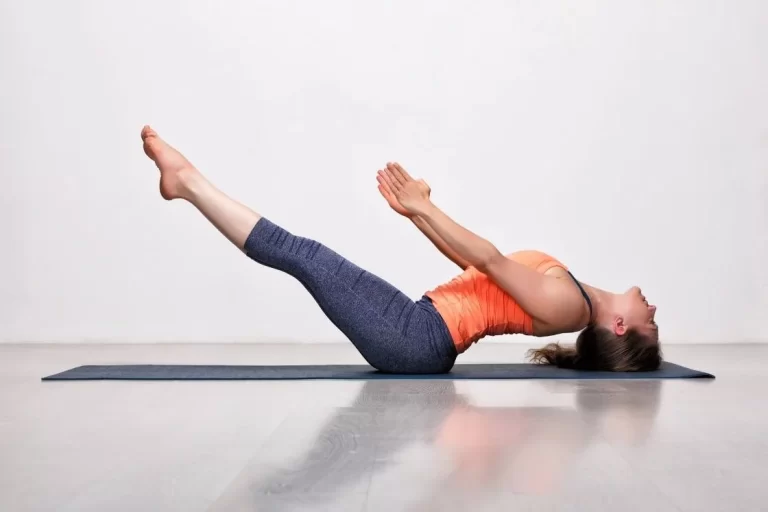
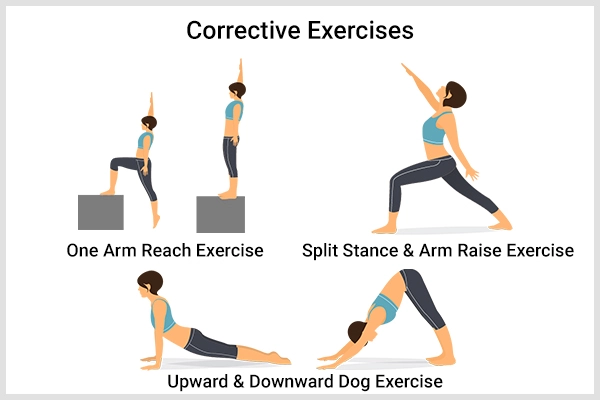
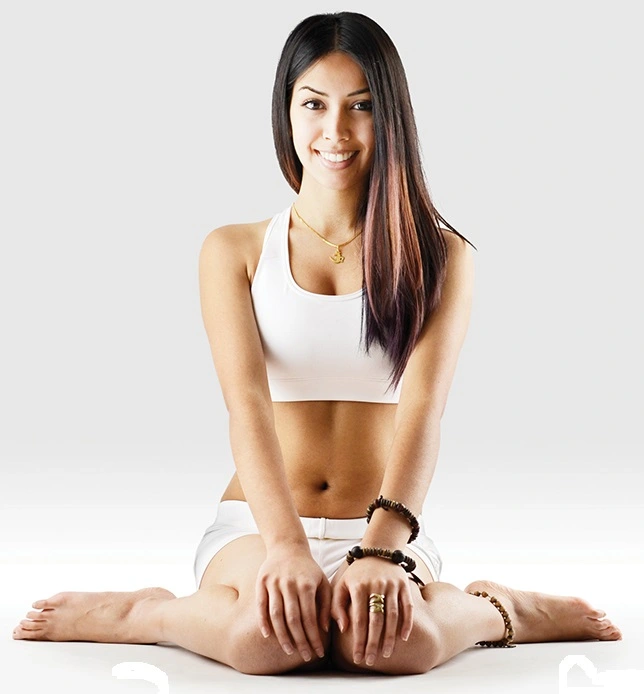
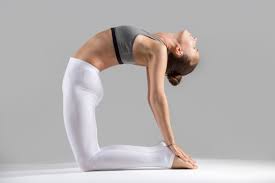
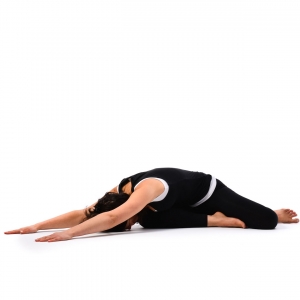
32 Comments